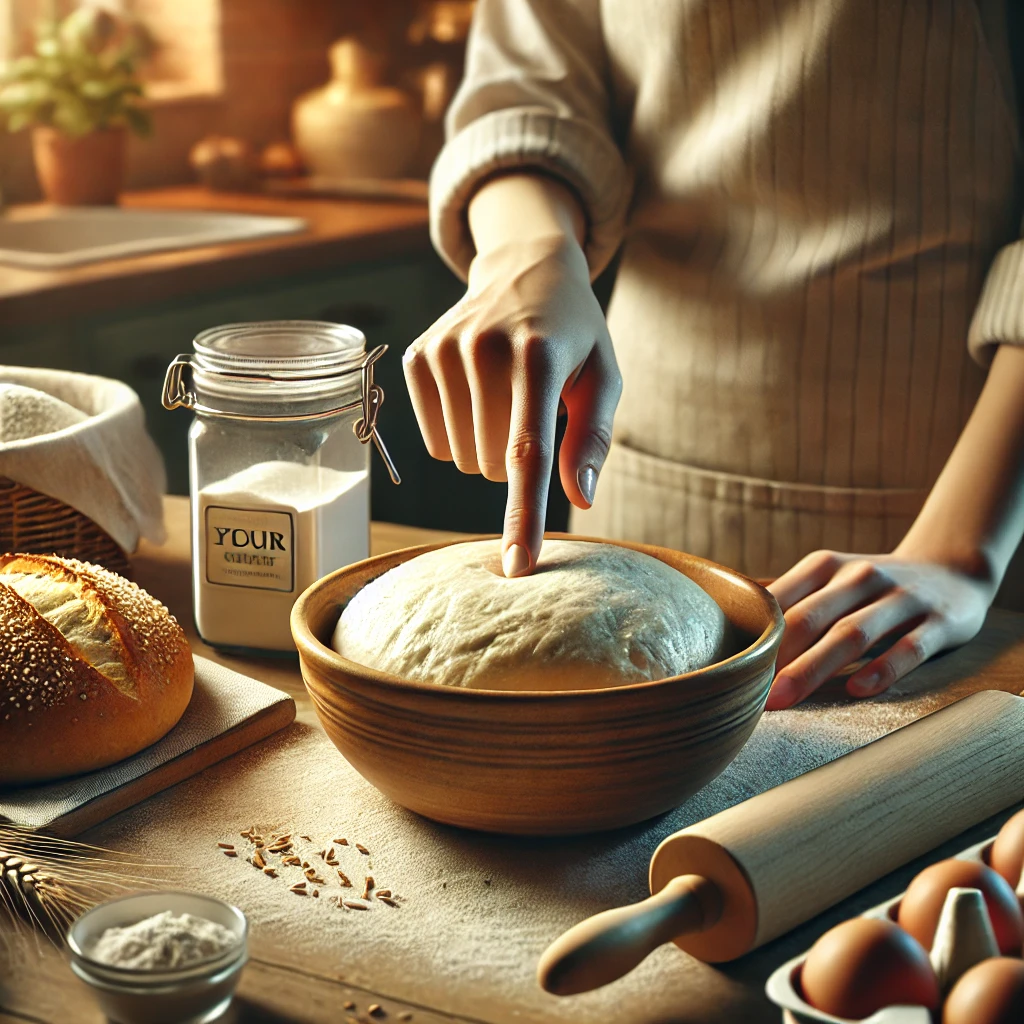When it comes to making perfect homemade bread, fermentation is the heart of the process. While many people rush through this step or take it for granted, understanding the science and importance of fermentation can make a dramatic difference in the texture, flavor, and quality of your bread. In this article, we’ll break down the different stages of fermentation and why it’s so crucial to getting your bread just right.
- What Is Fermentation?
Fermentation is the process by which yeast breaks down the sugars in the dough to produce carbon dioxide gas and alcohol. This process is what makes the dough rise and gives bread its airy texture. But it’s not just about volume; fermentation is also responsible for developing the complex flavors that make freshly baked bread irresistible.
- The Two Types of Fermentation: Bulk and Final Proofing
Fermentation happens in two main stages during the bread-making process: bulk fermentation and final proofing (or second rise). Each stage is essential for different reasons.
- Bulk Fermentation: This is the first rise that occurs after you mix and knead the dough. During this stage, the dough will increase in volume as yeast produces gas. Bulk fermentation is important because it allows the dough to develop its flavor and structure. This stage typically lasts between 1 to 2 hours at room temperature, depending on the recipe. In cooler environments, you can extend the bulk fermentation period or allow the dough to ferment in the fridge overnight, which gives the bread an even richer flavor.
- Final Proofing: After shaping your dough into its final form, it goes through the second rise. This stage is shorter than bulk fermentation, usually lasting about 30 minutes to an hour. During this time, the dough continues to rise, and its texture becomes even lighter and airier. It’s crucial not to over-proof the dough during this stage, as it can lead to bread with too large air pockets or even cause the dough to collapse.
- Why Is Fermentation Important for Flavor?
Fermentation doesn’t just create the rise in your bread, it also contributes to the flavor. As yeast ferments the dough, it produces organic acids that give bread its characteristic tangy flavor, particularly in sourdough. The longer the fermentation, the more complex and flavorful the bread becomes.
For example, a longer bulk fermentation will create a deeper, more nuanced flavor profile compared to a quicker rise. If you’re using a preferment like a sponge, the dough will ferment for a longer period before baking, leading to even richer flavor development.
- Temperature and Fermentation Time
Temperature plays a significant role in how quickly your dough ferments. Yeast is most active between 75°F and 80°F (24°C to 27°C). In colder environments, yeast activity slows down, resulting in longer fermentation times. Conversely, warmer temperatures speed up the fermentation process.
If you’re in a rush, you can speed up fermentation by using slightly warmer water or placing your dough in a warm area of your kitchen, but be careful not to overdo it, as excessive heat can kill the yeast and affect the dough’s rise.
- Autolyse: A Game-Changer for Fermentation
One technique that’s worth mentioning is autolyse, a process where flour and water are mixed and allowed to rest before adding yeast and salt. Autolyse enhances gluten development, leading to better dough texture and improved fermentation. It’s especially beneficial for artisan breads that require strong gluten development.
- Over-Fermentation: A Pitfall to Avoid
While fermentation is crucial, it’s equally important not to overdo it. Over-fermented dough can lead to bread that has too large air pockets, a crumbly texture, or even a sour taste. If you find that your dough has over-fermented, don’t panic! You can sometimes rescue it by gently kneading it again to redistribute the yeast and let it rise for a short time before baking.
- How to Tell When Your Dough Is Ready
Knowing when your dough is properly fermented is a key skill. There are a few ways to check:
- The Finger Test: Gently press a finger into the dough. If the indentation slowly fills in, the dough is ready for the next stage. If it doesn’t bounce back at all, it’s over-proofed.
- Visual Cues: The dough should have doubled in size during bulk fermentation. During final proofing, the dough should look puffy and slightly domed but not overly risen.
- The Role of Wild Yeast in Sourdough
If you’re making sourdough, wild yeast plays an essential role in fermentation. Unlike store-bought yeast, wild yeast is naturally present in the flour and air, and it ferments more slowly than commercial yeast. This slower fermentation process leads to a more complex flavor and a chewy, slightly tangy texture. If you’re using wild yeast, it’s essential to maintain a healthy sourdough starter, as it’s the engine for your bread’s fermentation.
- How to Optimize Fermentation for Different Breads
Different breads have varying fermentation needs. For example, rustic breads like baguettes or ciabatta benefit from longer fermentation times to develop their open crumb texture, while softer breads like sandwich loaves may have shorter fermentation periods to maintain a tighter crumb. Understanding how long to ferment your dough and the type of bread you’re making is vital for achieving the desired texture and flavor.
- Patience is Key
Above all, patience is a key ingredient in successful fermentation. While it might be tempting to rush through the fermentation process, taking your time allows the yeast to work its magic and develop those signature flavors. Don’t be afraid to experiment with different fermentation times and techniques to discover what works best for your bread.
